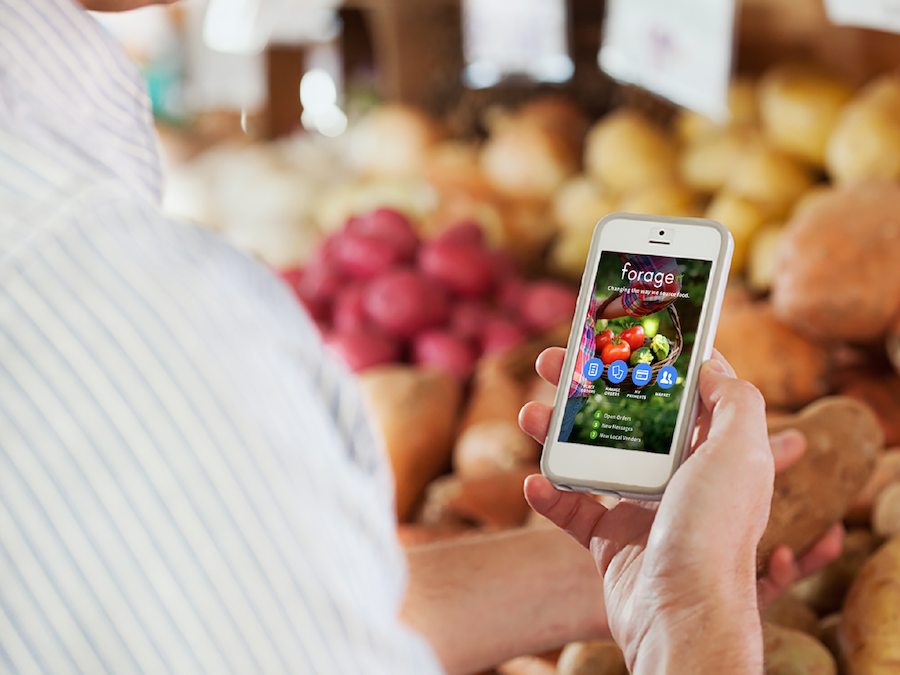
According to the results of just about every consumer preference survey done in the past few years, consumers want fresh, local foods. Market research publisher Packaged Facts predicts that local food and beverage sales will hit $20 billion in 2019, noting that the products are “stepping out of the shadow of their once ‘quirky niche’ designation to claim a much more prominent—and permanent—place in the U.S. food and beverage retail-scape.”
This is great news for local producers, including farmers and small specialty food manufacturers, who are seeing their numbers and their market share grow.
But it also poses challenges. Specifically, the nation’s food supply chain infrastructure was built decades ago, and it was designed to support large companies that rely on centralized distribution and long-distance transport. Retailers and foodservice establishments that want to offer their customers local products don’t have an efficient, cost-effective way to source those products.

That’s the problem serial tech entrepreneur David D. Stone wanted to solve when he founded Forager, a digital platform that simplifies the local sourcing process from procurement to payment. Launched in March of this year, Maine-based Forager has been recognized by Fast Company as one of the top regional “innovative solutions that can have national significance” and by the Forbes Technology Council as one of its “little-known tech startups likely to make a splash.”
To learn more about how this new technology is redefining the food supply chain to support the local food economy, Food Industry Executive spoke with Forager founder and CEO David Stone.
You’ve been involved in multiple startups in several industries. What was your inspiration to start Forager?
I’m a market intuitive by nature — I tend to see trends earlier than other people, and I look for barriers that are holding the trend back or an accelerant I can use to ignite it.
After giving my all for six years of high-velocity, intense entrepreneurial leadership at my previous startup [digital gift card company CashStar, which recently sold for $175MM], I took a break to travel around the world for 79 days on a walkabout to refresh, revive, and clear my head. I decided I wanted to do something that would have more lasting value, ‘to do good as well as do well.’
I also wanted to do something relevant to Maine. Maine has had a strong local food economy for a long time, and it ranks second on the Locavore Index, which rates states on their commitment to local food. In the last 10 years, more than 1,000 new independent farms have started in the state, most by people under 35 and 40% by women.
This trend is also happening nationwide. Local food is the fastest-growing segment of the food economy, growing at twice the rate of organics. People want to have a relationship with their food. They want to know where it comes from. So, we’re starting to see a return to the small independent grocer, butcher, baker, fishmonger, etc., and that’s creating a rich environment for innovation.
We’re also seeing a burgeoning of specialty grocery at the local level as companies try to meet the demands of a changing consumer demographic that wants something other than mass produced packaged goods. We’re really seeing demand heat up as Thanksgiving approaches. Eighty-three percent of the local food buyers we just surveyed are planning to purchase something locally sourced for their holiday tables.
However, the supply chain is constrained for so many reasons that it’s difficult for wholesalers, retailers, and innovative farmers to accelerate supply and make it more widely available to consumers. That’s why we started Forager — to support farmers within a day’s drive of the buyer and grocers/co-ops who want to sell more of their products.
What does the supply chain look like today and how does that pose a problem for sourcing local food?
Half of the food we eat comes through the grocery store. The challenge for grocers is that the supply chain system was built in the 60s and 70s and ‘80s, and it was designed for the large movement of goods, not for the local food economy. As a result, grocery stores typically source from a couple of large distributors, perhaps directly from a couple of large commodity farms, and maybe from UNFI [United Natural Foods, Inc.] for organics.
If a grocer or restaurant wants to source from local food producers, they may have to work with 30, 40, or more independent suppliers. We work with one grocer here in Portland, ME, that had 142 separate suppliers. That means 142 separate procurement processes, and every one of them — from discovery, to placing orders, to paying invoices — is complex and expensive compared to picking up the phone and calling a distributor or warehouse manager to order everything all at once. Unless you’re really dedicated and have the staff to do it, you’re not going to do it.
How does Forager solve this problem?
Forager is a sourcing platform that connects buyers with suppliers of local food. It digitizes the process to make local sourcing easier and reduce the cost of procurement from a large base of independent producers. For grocers, these processes can take as much as 60 hours per week when they’re not digitized. On the supply side, we’re focused primarily on independent farmers, covering mainly produce, but also some meat, dairy, and artisanal grocery items like maple sriracha. On the buyer side, we’re working with independent grocers and a few distributors.
Currently, farmers who are moderately digitally savvy typically communicate with buyers by sending an email twice a week listing the products they have available. The buyers who get all of these emails have to comb through them and then respond to each individual farmer. It’s an expensive and painful exercise to write checks to all of those people, and it costs thousands of dollars a year.
Forager gives farmers the ability to upload their products into the system so that buyers can view and search all of the products available from the different suppliers in their area. Buyers can also use Forager to publish what’s available to other buyers who aren’t on the platform. That’s why Fast Company called us the “digital pipeline for local food.”
Larger food manufacturers and distributors are also interested in sourcing locally. For example, Kroger recently announced an initiative to partner with more local brands. Could they use Forager as well?
Larger producers could certainly use the platform to source ingredients or for redistribution. As we build these networks of local producers, manufacturers and distributors can tap into them in the same way as a wholesaler that’s buying direct. This will lower costs and reduce friction so they can offer more local foods on their shelves or as part of their ingredients.
How do you think the local food economy and supply chain will evolve in the future?
I think we’ll see a lot more companies sourcing locally, not just grocers but manufacturers and even CPG companies looking for local ingredients. For example, one of the people I have working with me is both a hop farmer and a developer. Even though Maine has a lot of breweries, it’s difficult for them to source hops locally because they don’t have an established supply chain. As Forager expands in our community and others, it will provide a platform for producers of many different types of food and even beverages to source their ingredients locally.
I also think we’ll see more innovation, more locally sourced and manufactured specialty products, and more investment. Research shows that 92% of consumers prioritize freshness over other attributes like healthy and organic. To reach these consumers, we need to invest in farmers and the digital pipeline infrastructure like we invest in entrepreneurs. Companies that don’t will lose business.







